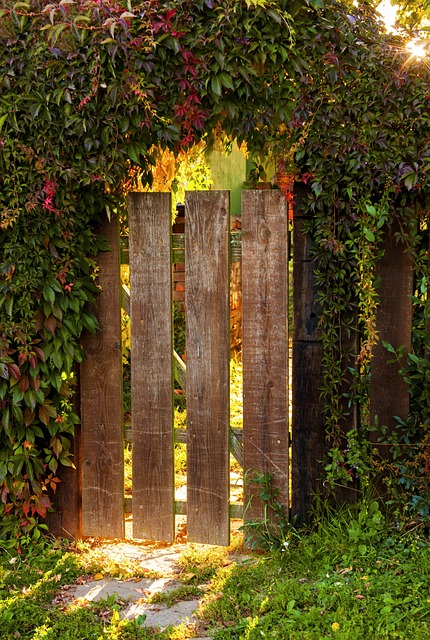Introducing the Ultimate Guide to Fence Staining and Sealing
Maintaining an aesthetically pleasing and durable wooden fence is a top priority for many homeowners. This comprehensive article delves into the art of fence staining and sealing, offering valuable insights on everything from choosing the perfect color and stain type to mastering application techniques and ensuring long-lasting protection. By understanding these key aspects, you’ll be equipped to transform your fence into a stunning outdoor feature that withstands the test of time.
- Understanding Fence Staining: Benefits and Techniques
- Choosing the Right Stain: Color, Type, and Application
- Sealing for Protection: Types of Sealers and Their Uses
- Maintenance Tips: How to Keep Your Fence Looking New
Understanding Fence Staining: Benefits and Techniques
Fence staining is a popular way to enhance the look and durability of wooden fences. By applying a protective coat of stain, you can transform your fence into a beautiful feature that complements your outdoor space. Beyond aesthetics, staining offers functional advantages; it shields the wood from the elements, preventing rot, fading, and cracking. Regular maintenance with quality stains can extend the life of your fence, saving you money in the long run by delaying the need for replacement.
There are various techniques for fence staining, each with its own pros and cons. Brush-on methods allow for precise control over application but can be time-consuming. Rollers or sprayers offer quicker coverage but might not achieve the same level of detail as a brush. For complex designs or intricate patterns, a stencil can be used to ensure even staining. Some stains require multiple coats for optimal protection and color, while others offer long-lasting coverage with just one application.
Choosing the Right Stain: Color, Type, and Application
Choosing the right stain is an essential step in fencing maintenance. Consider the desired color first; stains come in various hues, from natural wood tones to vibrant shades, allowing you to match your fence’s aesthetic with your preferred look. The type of stain also matters; oil-based stains offer deeper, richer colors and better protection against moisture, while water-based options are easier to apply and have a shorter odor.
When applying the stain, ensure even coverage for an aesthetically pleasing result. Use a brush or roller suitable for the stain’s type and the fence’s surface. Start from one corner and work your way across, maintaining a consistent thickness. Pay attention to corners, crevices, and intricate designs to avoid missed spots.
Sealing for Protection: Types of Sealers and Their Uses
Sealing plays a pivotal role in protecting your wooden fence from the elements, pests, and UV damage. It creates a barrier that prevents moisture, dirt, and other contaminants from seeping into the wood, which can lead to rot and deterioration. There are several types of sealers available on the market, each offering unique benefits and suitable for different climates and needs.
The most common types include water-based, oil-based, and UV-resistant sealers. Water-based sealers are eco-friendly, quick-drying, and easy to clean, making them ideal for areas with moderate sun exposure. Oil-based sealers, on the other hand, offer superior protection against harsh weather conditions, stains, and pests but take longer to dry and may require more frequent reapplication. UV-resistant sealers are designed specifically to protect against sun damage, making them perfect for regions with high UV levels.
Maintenance Tips: How to Keep Your Fence Looking New
Regular maintenance is key to keeping your wooden fence looking new and vibrant for years to come. Start by cleaning the fence at least once a year to remove any built-up dirt, mold, or mildew. Use a soft-bristled brush and a mild detergent or pressure washer, depending on the severity of the grime. This initial step ensures that any stains or sealers you apply later will adhere properly.
After cleaning, inspect your fence for any damaged or rotten sections. Repair or replace these areas promptly to prevent further deterioration. Regular reapplication of a high-quality fence stain every 1-2 years will protect the wood from the elements and enhance its aesthetic appeal. Choose a stain that offers UV protection to minimize fading and maintain the rich color of your fence.
